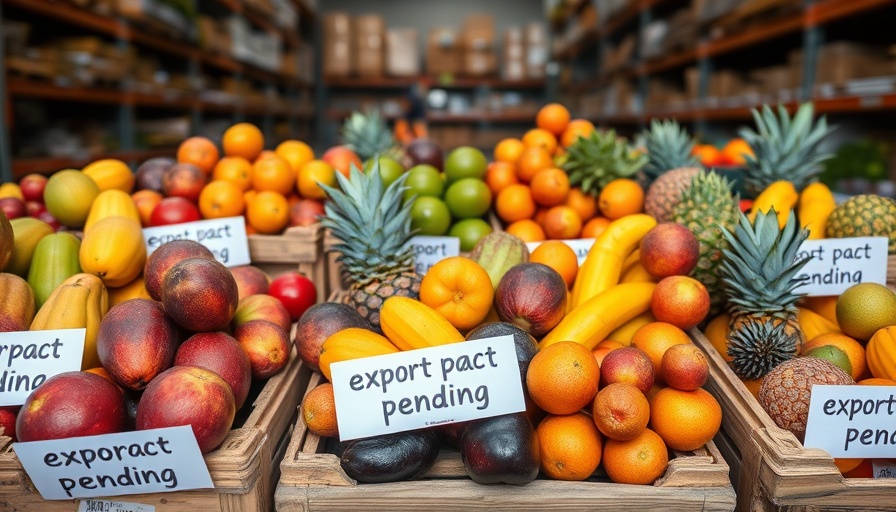
The Price of Safety: Investigating Food Regulations in South Africa
In recent months, the case of a prominent peanut butter manufacturer highlights the critical need for stringent food safety regulations in South Africa. After a recall by major retailers like Pick n Pay and Dis-Chem, it was revealed that the maker had violated health and safety mandates, leading to a hefty fine. Such incidents not only raise questions about accountability in the food industry but also spotlight broader implications for consumers and the regulatory landscape.
Impacts of Food Safety Breaches on Consumer Trust
The ramifications of food safety violations extend well beyond legal penalties. For consumers, recalls of food products can lead to a profound loss of trust in brands and retailers. When major retailers like Pick n Pay take action to withdraw products, it suggests potential lapses in food safety protocols. Consequently, people may turn to alternative products or suppliers, threatening the market share of even established manufacturers. This erosion of trust is not just a business concern; it directly affects the consumer’s perception of food safety in South Africa.
Historical Context: Food Safety Regulation in South Africa
Historically, South Africa's journey towards robust food safety measures has been tumultuous. The Foodstuffs, Cosmetics and Disinfectants Act, aimed at protecting consumers, reflects a proactive approach to regulating food products. Yet, enforcement remains sporadic. Events like these starkly illustrate the ongoing challenges faced by regulators, as well as the need for modernization of rules governing food safety to adapt to contemporary production methods and supply chain complexities.
The Role of Regulatory Bodies in Ensuring Accountability
In this case, the involvement of regulatory authorities such as the Department of Health and the National Consumer Commission sheds light on the accountability mechanisms that are supposed to be in place. Their responses and follow-through on the enforcement of regulations can shape consumer perceptions and the overall integrity of food safety standards. A transparent and diligent regulatory framework is essential to prevent similar incidents in the future, protecting consumers from potential health hazards.
The Current Legislative Environment and Needed Reforms
As the South African landscape evolves, so too must its food safety legislation. Advocacy for more stringent laws is growing amid rising concerns about foodborne illnesses and contamination. Stakeholders across the food supply chain—from farmers to manufacturers—must press for collaborative reforms that prioritize consumer safety without stifling innovation within the food sector.
Looking Ahead: Future Trends in Food Safety
Anticipating future trends in food safety, the growing demand for transparency and traceability will likely demand innovative solutions. Technologies such as blockchain offer promising pathways to strengthen traceability in the food supply chain, potentially protecting consumers and instilling trust. As South Africa grapples with its food safety framework, integrating advanced technologies may not only safeguard public health but also enhance the country’s reputation on the international stage.
High-profile recalls can serve as wake-up calls for both consumers and manufacturers. Engaging with these issues is essential for fostering a landscape where food safety is at the forefront of public concern. Investors and stakeholders cognizant of these shifts will be best equipped to navigate the complexities of an evolving market.
As professionals, it's critical to advocate for comprehensive food safety reforms that position South Africa as a leader in sustainable and safe food practices. Now more than ever, aware consumers can influence change across policy, regulation, and corporate responsibility.
It is vital for all industry players to actively participate in shaping the future of food safety. As concerns grow, stay informed and engaged by following developments and supporting more rigorous standards in food protection.
 Add Row
Add Row  Add
Add 




Write A Comment